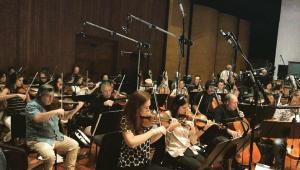ViewPoint: Adventures on the Web, Adventures in Video
 Big things are happening on the Ultimate AV website (www.ultimateAVmag.com). Go there and you'll find the hottest new addition to the Stereophile UltimateAV world: our very own eNewsletter. Want more information on how to improve your home theater system? You'll find it. Want to know what's happening in the fast-changing AV world? You got it. Want to know what you should look out for in HDTV, or how that latest and greatest big Hollywood blockbuster DVD really stacks up? We'll tell you about it. There will be a new edition every month. It's yours free for just signing up, so check it out now!
Big things are happening on the Ultimate AV website (www.ultimateAVmag.com). Go there and you'll find the hottest new addition to the Stereophile UltimateAV world: our very own eNewsletter. Want more information on how to improve your home theater system? You'll find it. Want to know what's happening in the fast-changing AV world? You got it. Want to know what you should look out for in HDTV, or how that latest and greatest big Hollywood blockbuster DVD really stacks up? We'll tell you about it. There will be a new edition every month. It's yours free for just signing up, so check it out now!
And while we're on the subject of hot stuff, welcome to our first "Recommended Components" issue dedicated to video. In these short winter days, our thoughts turn to the holidays, the new year, all the great new movies coming out on DVD, and the rousing end to the football season. Now that HDTV is well past the tipping point, with prices coming down and sales shooting up, many of you are pondering which way to turn for your next television or video projector.
We don't think you should have to wait until the spring—the time we normally publish our full "Recommended Components" compilation—to find out. This month we present our first separate "Video Recommended Components" list. If you're a regular reader, you'll jump in feet first. If you're not, there's plenty of material in both the introductory comments for each product section and in this month's Q&A to get you up to speed on all the latest video technologies. Which one should you choose? After you read this issue, you should have a better idea of which is right for you.
Video today is an exciting but moving target. For life on the video cutting edge, check out our first reviews of a 3-chip DLP, the InFocus ScreenPlay 777, and a 1920x1080 LCD flat panel, the Sharp Aquos LC-45GX6U, in this issue.
And if that isn't cutting-edge enough for you, I was floored by yet another new development at the recent CEATEC in Japan—Japan's CES. SED, for Surface-conduction Electron-emitter Display, is a phosphor-based, flat-panel technology like plasma. But with SED, the phosphors are ignited by an electron beam—just as in a CRT. Unlike a conventional CRT, however, the SED panel has a separate beam for each pixel. An electronic beam can be shut off when you need to reproduce black, so it's not surprising that the 36-inch prototype on display boasted a contrast ratio of 8600:1!
The image produced on this relatively small screen was amazing. Side by side with both an LCD and a plasma, it looked like a CRT, with all the strengths of that classic technology—excellent black levels, fine shadow detail without false contours, and no image lag. The program material used for the demonstrations was genuinely challenging, with dark shadows and deep blacks. For a rough idea of what I saw, a screenshot from the SED display was published in the article "CEATEC Japan 2004" posted on our website on October 18, 2004. It's still available in the news archives there.
SED is still about two years away from commercial realization, with many potential obstacles in the way of a reliable, competitive product. And other companies are working on similar technologies. Check out "Nanotech on Display" in the November 2004 issue of MIT's Technology Review for a story on Samsung's work with Field Emission Displays (FED).
These developments are typical of the exciting things happening in video. That's true even down at your local video store, where what you can see today would have seemed like science fiction five years ago. This issue of UAV should give you the basic information you need to make the most of it.—Thomas J. Norton
- Log in or register to post comments































































